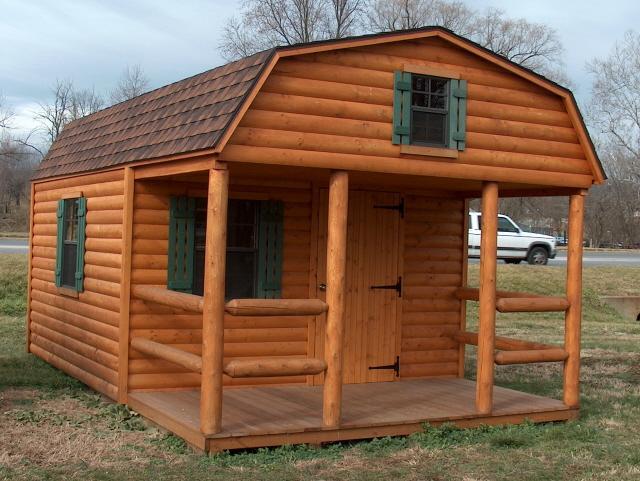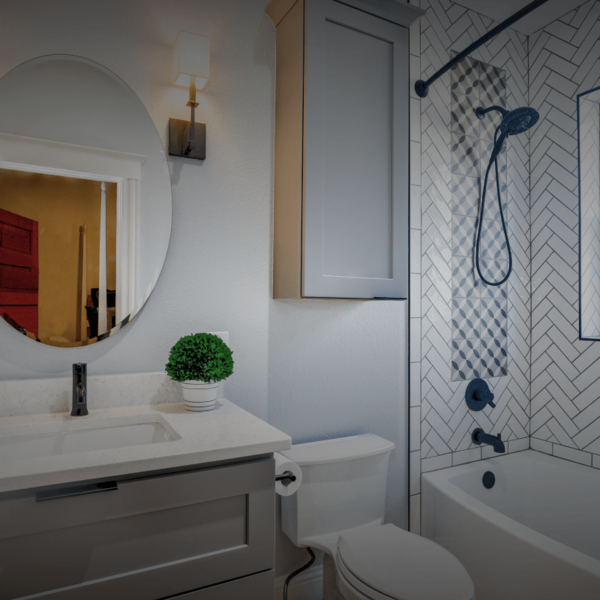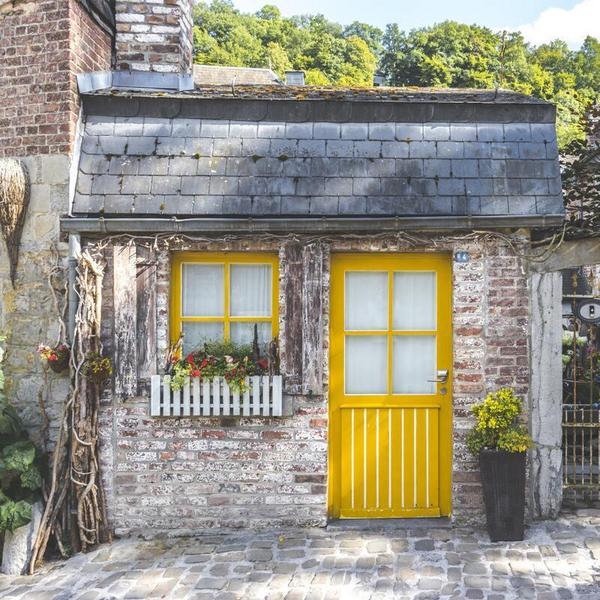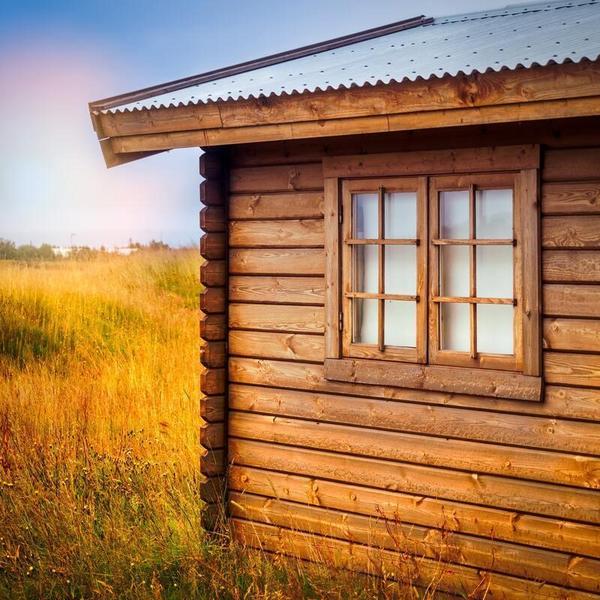Choosing a Log Cabin Kit for your Tiny Home
The tiny home movement is so much more than just a small place to call home. It goes hand in hand with a different type of lifestyle which so many people are seeking.
Building a tiny home is often much more eco-friendly due to the amount of materials that are needed, and one of the most eco friendly types of tiny homes you can build is a log cabin.
In this article, David Woods, the editor of Log Cabin Hub, shares what exactly you can expect to be included in a log cabin kit, how to choose the best log cabin kit and how to select a company to build your tiny home. If this article is not enough, don’t be shy to read his extensive piece on log cabin kits.
Why Is a Log Cabin a Great Choice for a Tiny Home?
If you’re on the journey to go tiny, being more eco-friendly is probably one of your priorities too. They seem to go hand in hand. Wood is an excellent choice of material when it comes to sustainability, as long as you choose wood which has been grown in a sustainable way. It is also a solid construction material which will last for generations to come.
As well as being sustainable, log cabins are an affordable choice if you want to create a sturdy and durable tiny home. Logs are also highly versatile and can be used in a variety of different ways to create the perfect home.

Alan’s Factory Outlet, Log Storage Buildings
What’s Included in a Log Cabin Kit?
It’s really important to understand exactly what is included in a log cabin kit before you commit to buying, because different manufacturers offer different levels of finishes.
As a standard, all kits come with log walls, roofing joists, windows and doors. This is usually known as a shell package.
Shell Package
A shell package is the cheapest initial option, but you’ll still need to buy the flooring, sometimes the insulation for the floor and roof, and all the interior finishings.
Sometimes buying a shell can actually turn out more expensive than buying a complete kit, as you’ll need to source all your own materials.
Turnkey Package
The second choice is buy a turnkey cabin, which will include everything you need to complete the cabin from start to finish.
If you choose to buy a turnkey cabin, remember that this cost will not be the final cost of your cabin. You’ll need to factor in delivery, foundations, the cost of land, labor and interior finishings.
A good rule of thumb is to time the cost of the kit by two if you plan on doing the build yourself. Time it by three if you plan on paying for labor costs as well.
For example, a tiny log cabin kit which costs $20,000, will cost you a total of $40,000 if you decide to build it yourself or $60,000 if you pay labor and have someone build it for you.
Modular Cabin
A third option is to buy a modular log home, which is built and assembled in a factory, and then delivered to your site in one or two pieces.
Given the size of most tiny homes, this is probably the best choice.
On average, you can expect to pay $80 per square foot of log cabin, so a 300 square foot tiny home kit would cost you around $16,500.
Whichever option you opt for, make sure you get a full written list of all the components that are included in the kit, and a list of all the things you’ll need to finish off. It will be easier to decide which is the best option for you.
How to Select the Best Log Cabin Kit
Price
One of the main factors in choosing a log cabin kit is your budget. The average price of a log cabin kit is $55-80 per square foot.
This means that a 120 square foot tiny home would cost around $10,000. Bear in mind that this price only covers the price of the shell. As mentionned earlier, the shell usually equates to around 1/3 of the cost of the finished cabin once you factor in labor cost and everything.
Log Choice
There are around two dozen different types of wood which are typically used to build log cabins. The most common ones in the industry are cedar, pine spruce and cypress.
Cedar is the premium type of log so you can expect to pay slightly more for a kit made from this material.
You can also choose the profile of the log depending on what you want it to look like from the exterior and interior.
The most common profiles are round logs, square hand-hewn logs and D logs. D logs give you the typical appearance of a log cabin from the outside but have flat walls on the inside, which is typical for designing a tiny home.
Notch Type
The last choice you will need to make is the type of notch that will join the corners together. Each notch produces quite a different look.
The most common choice is a fully scribed log, which achieves the typical log cabin look. You can also opt for a dovetail notch, or a tongue and groove notch.
The notch you choose can sometimes affect the price of the kit. However, since most of the notches are made on machinery, it shouldn’t affect the price too much.
Some notches such as saddle notches, or amish built cabins, are carved and built by hand so you can expect to pay a higher premium for those.
How to Select the Best Log Cabin Kit Company
With thousands of log cabins being built every year throughout the US, it is difficult to choose just one manufacturer.
Make sure you find out the answers to these simple questions to ensure that the company you choose to design your tiny home is reputable, and that the cabin will be of high quality.
Are They Registered with an Association?
If a manufacturer is registered with the National Association of Home Builders, the Log and Timber Homes Council or a similar body, they will likely have to adhere to strict building regulations and requirements which will ensure the quality of the kit you buy.
Do They Offer On-Site Installation?
Even if you are happy to build the kit yourself, always check whether they offer this as an option. All reputable companies will be happy to help or recommend a builder to help put your kit together.
If they do not offer this service, it suggests they do not have full confidence in their products and likely will not offer the assistance you need during the build stage.
Are the Logs Grade Stamped?
Grade stamped logs ensure that the building materials which are used to build your tiny log home have been approved to meet building codes and are high quality.
The International Code Council (ICC) 400-2007 Standard on the Design and Construction of Log Structures, insists that “all logs used in the construction of log structures shall be stress graded and identified by the grade mark issued by an accredited log agency.”
Logs that are grade stamped have been approved for construction projects for either residential or commercial log homes.
While you might be able to buy cheaper logs from a local sawmill which are not graded, they are not guaranteed to be as durable and long lasting as those logs which have passed rigorous checks.
All logs which are used in log home kits need to be graded, and will not pass local building codes if they’re not.
Can you Speak to Past Clients?
Ideally you want to hear from past customers to find out what their experience of working with the manufacturer was like.
Any reputable companies will be happy to point you in the right direction to either read reviews or speak to previous clients.
Do They Offer a Warranty?
You should expect a minimum ten-year warranty with your log cabin kit. This will most likely come with a clause that you will stick to a maintenance schedule.
For example, you might be expected to check for any damage to the logs or chinking once per year, and stain the cabin once every five years.
Some companies even offer a limited lifetime warranty, which will last for the duration of the customer’s life.
Summary
If you love the idea of downsizing and are thinking of designing a tiny home log cabins kits are the perfect option.
They are sustainable, quick and easy to build, eco-friendly and very versatile. If you combine that with the rustic and traditional feel of a log cabin, you have created the dream small home!
We hope this article has inspired you to build your own tiny log home, let us know if you have any questions.



